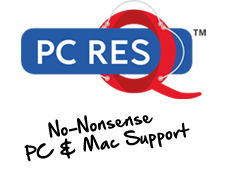The smarts can be a right pain.
I remember watching the film ‘Catch Me If You Can’ starring Leonardo DiCaprio who played the life of Frank Abagnale, who, before his 19th birthday, successfully performed cons worth millions of dollars by posing as a Pan American World Airways pilot, a Georgia doctor, and a Louisiana parish prosecutor.
His primary crime was cheque fraud and became so experienced that the FBI eventually turned to him to help in catching other cheque forgers.
At least in this instance, they made good use of Frank’s skills but this isn’t always the case.
I wrote an article back in 2013 about Ransomware.
This is when you get a particular virus on your system and goes to work by scrambling all your data into an unreadable format and making it completely unusable.
Now comes the painful bit.
If you want to get your data back to the original format, you’ll have to pay a ransom demand and this will be a minimum of £300. Ouch!
They’re not to patient either; this demand will increase after a short period so there’s no time to dither.
And all this happened at a click of a button.
WHY YOU SHOULD AVOID PAYING
For starters, the fraudsters will see you as an easy target and who is to say they won’t come back asking for more.
Secondly, you have to remember that this is a crime. Do you really want to be funding their activities?
IS THERE A WAY AROUND?
To avoid the costly route, a cheaper option would be to restore the data back from an offline backup that isn’t encrypted. I’ll explain more about this in a sec.
Again, and apologies for harping on about this – but you do have a backup don’t you?
IS THIS SCAM COMMON?
Well back in 2013, 17% of business surveyed got caught with Ransomware. In 2015 this has risen to 72%!
So based on this increase, I’d say it’s worth taking very seriously; for both business and at home.
And this doesn’t just affect computers; it’s happening on mobile devices as well.
It’s can sometimes be hidden within a popular app which increases the chances that you’ll download it.
These gangs; yes they’re a team of extremely sophisticated people and have recognised that targeting millions of people over the internet is far easier and more profitable to them than your credit card.
To give you an idea on the scale of these scams – one type of Ransomware known as CryptoWall generated, wait for it, a staggering £215 million for the lovely people behind it.
That’s no typo; it is a million.
And they certainly won’t be taking the Frank Abagnale route and putting their skills to good use.
SO WHAT CAN YOU DO TO AVOID THIS?
1) Make sure you’re AntiVirus is fully up to date.
If your Antivirus doesn’t have Malware protection built-in, I’d strongly suggest that you get one. Something similar to the Malwarebytes Premium version.
2) Install all available security updates.
3) Make sure you have an OFFLINE backup.
Why offline you may ask?
If you have an online secure backup (ONLY) like Dropbox; it means that your data is updated instantaneously with the files stored online, so if your system became infected with Ransomware……
THAT WON’T BE GOOD NEWS.
Because all the data on your computer and the cloud will both be unreadable and you will have NO OPTION but to pay the ransom demand.
Dropbox does have an option whereby you can restore an older version of a file but you certainly wouldn’t want to be doing this for each and every file on your computer.
So make sure you take regular offline backups alongside your online one.
DOES THIS AFFECT APPLE MAC?
Apple still has a relatively low share of the market in comparison to Windows PC’s but Ransomware CAN be designed for Mac’s; it’s just that the gangs see the PC’s as a far more attractive and profitable target.
So if you do have a Mac, I would be just as a wary.
One thing to check on your Mac is the setting within the ‘Security & Privacy’ section. The safest option to have is the ‘Mac App Store’ setting.
This will ensure that the apps that you download are genuine and have been verified by Apple.
If you find that you’re unable to download a particular piece of software that’s not within the Apple App store but you know that’s safe, this setting will need to be changed to ‘Mac App Store and Identified developers’.
I would advise changing this setting back to ‘Mac App Store’ once you’ve installed the software though.
Some of you may see this as scare mongering but I’m merely stating facts here.
I’m a fairly charitable guy but I for one would rather pay £300 to a worthier cause.
So be careful what you click on!





